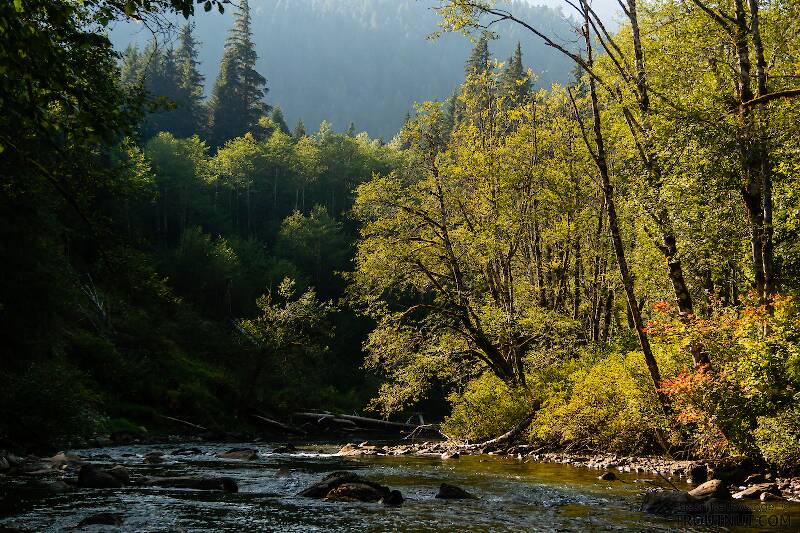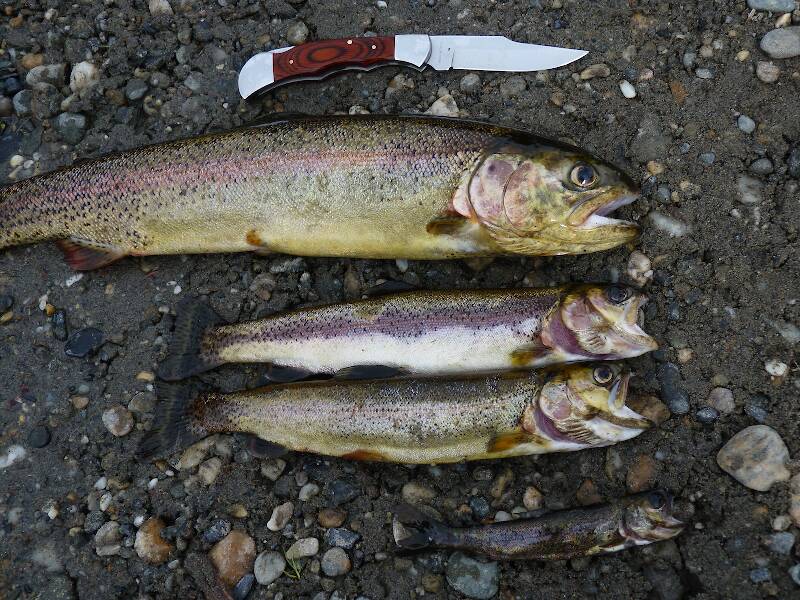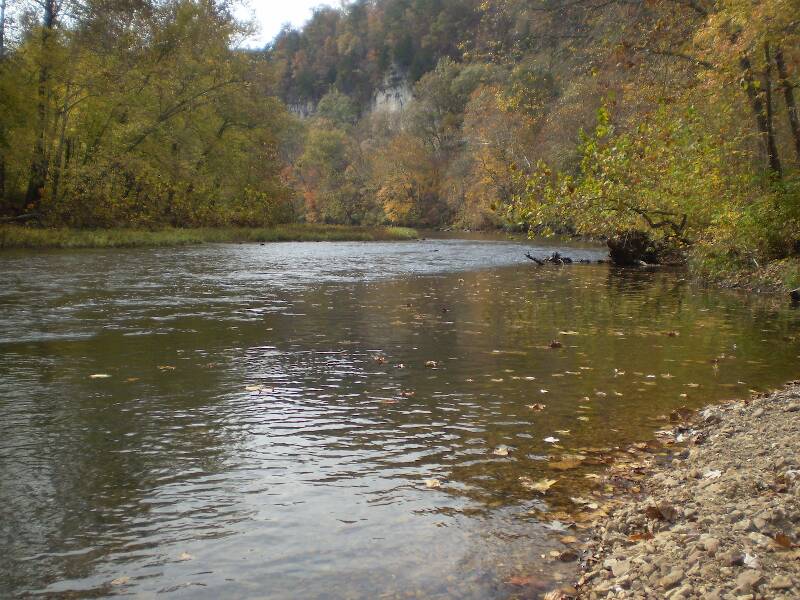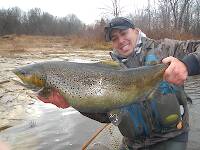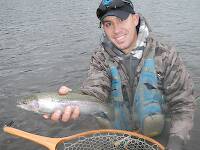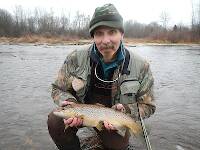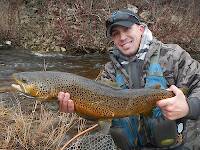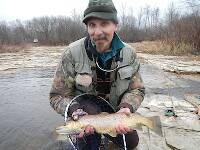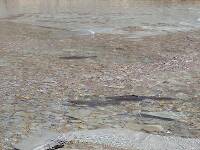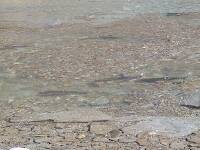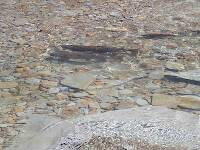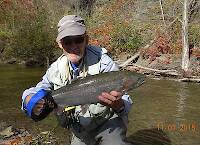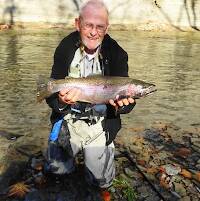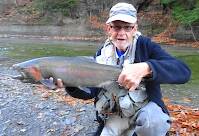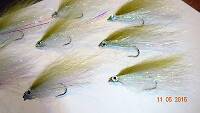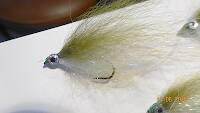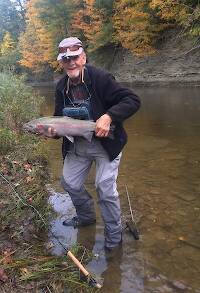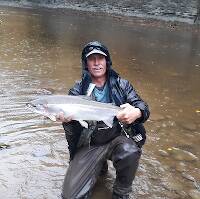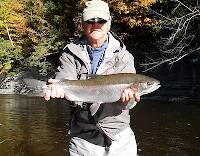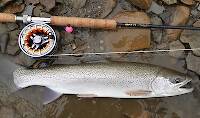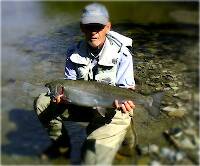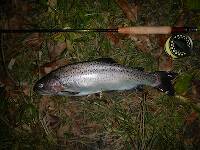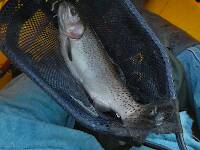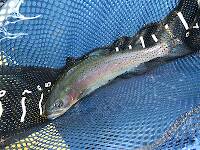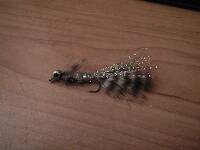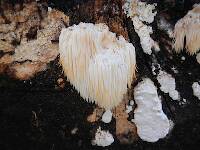
Blue-winged Olives
Baetis
Tiny Baetis mayflies are perhaps the most commonly encountered and imitated by anglers on all American trout streams due to their great abundance, widespread distribution, and trout-friendly emergence habits.
Featured on the forum

This one seems to lead to Couplet 35 of the Key to Genera of Perlodidae Nymphs and the genus Isoperla, but I'm skeptical that's correct based on the general look. I need to get it under the microscope to review several choices in the key, and it'll probably end up a different Perlodidae.

Troutnut is a project started in 2003 by salmonid ecologist Jason "Troutnut" Neuswanger to help anglers and
fly tyers unabashedly embrace the entomological side of the sport. Learn more about Troutnut or
support the project for an enhanced experience here.
GldstrmSam on Mar 3, 2012March 3rd, 2012, 2:38 pm EST
With lake stocking season just around the corner I decided to share the results of something I just researched. This is the stocking results for one of the 3 million lakes in Alaska.
In a previous thread Wbranch mentioned Alaska's amazing stocking program. This backs up what he said.
In Chena Lake a 259 acre lake this is how many fish were stocked since 1995:
Arctic Char: 120,070
Coho Salmon: 319,621
Grayling: 45,977
Rainbow Trout: 210,592
Chinook(King) Salmon: 200,892
Total Fish: 897,152
Est. total fish caught 1996-2010: 130,479
If you have stocking numbers that can beat this then post away!
In a previous thread Wbranch mentioned Alaska's amazing stocking program. This backs up what he said.
In Chena Lake a 259 acre lake this is how many fish were stocked since 1995:
Arctic Char: 120,070
Coho Salmon: 319,621
Grayling: 45,977
Rainbow Trout: 210,592
Chinook(King) Salmon: 200,892
Total Fish: 897,152
Est. total fish caught 1996-2010: 130,479
If you have stocking numbers that can beat this then post away!
There is no greater fan of fly fishing than the worm. ~Patrick F. McManus
Wbranch on Mar 3, 2012March 3rd, 2012, 3:27 pm EST
The catch number to stock number ratio is only 14.5% - is that considered a good return on investment?
Catskill fly fisher for fifty-five years.
GldstrmSam on Mar 3, 2012March 3rd, 2012, 3:53 pm EST
The catch number to stock number ratio is only 14.5% - is that considered a good return on investment?
I'm not sure on that question.
There is no greater fan of fly fishing than the worm. ~Patrick F. McManus
Motrout on Mar 4, 2012March 4th, 2012, 5:37 pm EST
If you have stocking numbers that can beat this then post away!
I guess unfortunately I have to. We have four "trout parks" here in Missouri, each of which are stocked with approximately 100,000 per year. And the longest of these so called trout streams is three miles. So excessive.
"I don't know what fly fishing teaches us, but I think it's something we need to know."-John Gierach
http://fishingintheozarks.blogspot.com/
http://fishingintheozarks.blogspot.com/
GldstrmSam on Mar 4, 2012March 4th, 2012, 9:00 pm EST
...100,000 per year. And the longest of these so called trout streams is three miles.
Well you beat me for sure.
Talk about over crowding. That is so sad.
There is no greater fan of fly fishing than the worm. ~Patrick F. McManus
Wbranch on Mar 5, 2012March 5th, 2012, 5:38 am EST
Well I have one that makes both of yours look puny in comparison. Pennslyvania stocks 1.2 million steelhead smolt every year into about a dozen, at the most, little creeks in NE PA. There are only three streams that I consider really fishable with a fly rod and one of them is just a zoo. The other two have somewhat less pressure and if you are willing to walk 1 - 2 miles away from your vehicle you can often find long stretches of stream with just half a dozen other guys.
Catskill fly fisher for fifty-five years.
GldstrmSam on Mar 5, 2012March 5th, 2012, 9:02 am EST
Pennslyvania stocks 1.2 million steelhead smolt every year into about a dozen, at the most, little creeks in NE PA. There are only three streams that I consider really fishable with a fly rod and one of them is just a zoo. The other two have somewhat less pressure and if you are willing to walk 1 - 2 miles away from your vehicle you can often find long stretches of stream with just half a dozen other guys.
I would like to see the harvest records for those streams. I bet that those streams are way more heavily fished than the lakes up here. Chena lake gets from 2000-3000 anglers per year.
There is no greater fan of fly fishing than the worm. ~Patrick F. McManus
Wbranch on Mar 5, 2012March 5th, 2012, 6:14 pm EST
I don't have actual Fish commission numbers but I've heard about 150,000 are landed every season - many of them are killed. I see the same guys go out every day and kill their limit of three steelhead in the 6# - 9# range. How much frigging steelhead can you eat a week? I've been told they don't taste all that good unless you smoke them.
Many people are saying the fish numbers are down drastically in the creeks from five years ago. There are other factors besides fishermen that are affecting the return, and therefore, the catch rate.
I've been told that a little, invasive minnow called the Gobi has invaded Lake Erie and the walleyes just love to eat them. Well as the walleye fishery has improved, and the fish are getting bigger, they are also eating a tremendous amount of the steelhead smolts that are put in their natal streams every spring.
In addition to the walleye issue the black cormorant has really rebounded since Lake Erie's waters became so much cleaner after another invasive species, the zebra mussel, came to the lake and is filtering millions and millions of gallons of water every day. The cormorant has been breeding prolificly and eating lots of steelhead smolts. I read where the PA Fish & Game commission is killing off all the eggs in cormorant nests in an effort to curb natural reproduction.
Many people are saying the fish numbers are down drastically in the creeks from five years ago. There are other factors besides fishermen that are affecting the return, and therefore, the catch rate.
I've been told that a little, invasive minnow called the Gobi has invaded Lake Erie and the walleyes just love to eat them. Well as the walleye fishery has improved, and the fish are getting bigger, they are also eating a tremendous amount of the steelhead smolts that are put in their natal streams every spring.
In addition to the walleye issue the black cormorant has really rebounded since Lake Erie's waters became so much cleaner after another invasive species, the zebra mussel, came to the lake and is filtering millions and millions of gallons of water every day. The cormorant has been breeding prolificly and eating lots of steelhead smolts. I read where the PA Fish & Game commission is killing off all the eggs in cormorant nests in an effort to curb natural reproduction.
Catskill fly fisher for fifty-five years.
GldstrmSam on Mar 6, 2012March 6th, 2012, 8:49 am EST
It is so sad how a little invasive fish like a Gobi can cause so many problems.
There is no greater fan of fly fishing than the worm. ~Patrick F. McManus
Quick Reply
Related Discussions
Topic
Replies
Last Reply
Re: Upper Peninsula Chinook (King) Salmon Highlights 2012 Video HD
In the Photography Board by Pryal74
In the Photography Board by Pryal74
6
Oct 18, 2012
by Orn
by Orn
Re: 15 Pound Steelhead (Trout) caught in Bosnia (Slideshow & Videos included)
In Fishing Reports by IvansFishin
In Fishing Reports by IvansFishin
4
Jan 27, 2017
by IvansFishin
by IvansFishin
2
Nov 22, 2016
by PaulRoberts
by PaulRoberts

